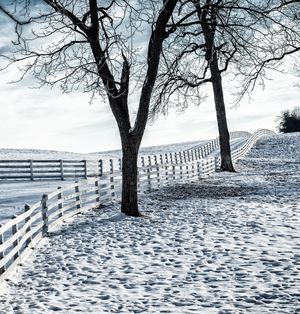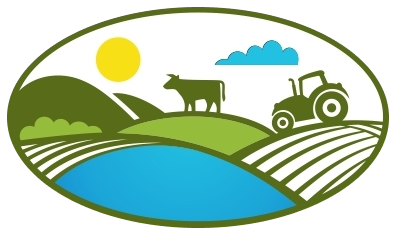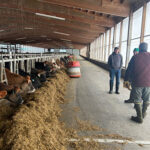
by John Roberts, Executive Director
The days are shortening and cooling off, following a long stretch of surprisingly pleasant fall weather. Nonetheless, winter is coming, by which time you’ll hopefully have all the crops harvested, all the manure spread, all the cover crops planted, and all the livestock returned to the barns.
You’re all done, so what do you do with all that time now weighing on your hands? I know, I hear you, “WHAT time?!?” I’ll be bold–maybe brave–to offer some questions to ask of yourself.
1. “What went well this year? And why?”
Ideally, you have enough high quality home-grown feed for the winter that will enable you to produce milk, eggs, and meat at as low of a cost as possible. Now is the time to sit down with your nutritionist and figure out what is the most cost-effective production you can make. If you feed corn silage, hopefully you still have enough left over from last year to take you through to the beginning of 2022. That will allow this year’s corn silage to mature in the bunk and make the energy in it more effective and available. On the other hand, if you’ve run short of last year’s corn silage, then now would be the time to plan that this year’s harvest lasts through to 2023.
2. “What did not go well? And why?”
This is an equally important conversation to have with yourself. Quality of feed can vary from year to year, depending on the weather–temperature, precipitation, humidity, and more. Farmers who graze their livestock see the impact of different growing seasons reasonably quickly. What adjustments can you plan for next year? Try adjusting your grazing rotation intervals, changing the species mix in your pastures, adding a summer annual to ameliorate high temperatures, or raising the percent of legumes in the sward. This is not easy to do, but can be accomplished through careful planning now.
3. “Did I make full use of any assistance available to improve my operation?”
First, there’s the Dairy Margin Coverage (DMC) program, a federal risk management program which helps cover the difference between the price paid to farmers and the cost of feed. This year, the DMC program has helped a lot of farmers across the state.
There’s also the Best Management Practices (BMP) program through the Vermont Agency of Agriculture, Food and Markets. This program can provide you with technical and financial assistance to make improvements to your production area to maintain compliance with Vermont’s environmental rules. It covers things from manure storage, to grazing infrastructure, to stormwater diversion, and more. All it takes is a phone call and it doesn’t commit you to doing something. If you’re nervous about potentially asking a regulator onto your farm, you can call me to discuss anything you might be concerned about.
Other programs like Farm Agronomic Practices (FAP) and Capital Equipment Assistance Programs (CEAP) are due in the middle-to-end of 2022, so you have time to figure out your needs and interests.
4. “Do I know key data points to help me make good decisions?”
Knowing some of the basic figures in your business gives you a good foundation to decide which direction to take. For example, do you know within a 5% range how much it costs to make milk per cwt? Do you know how much per pound of hanging weight does it cost you to raise beef? Given all of the challenges on the horizon– regulatory changes, climate mitigation, price stability, and more–having an understanding of the important benchmarks for your business will help you make better, more timely decisions down the road.
(Oh, and before you ask…Was I good at this? Not really, but my years with the Agency of Agriculture convinced me of the importance of doing planning. It’s also something that I’m sure many of you do during the day riding in your tractor or truck. Remember that we are lucky to be supported by a great group of UVM Extension personnel to have these discussions with!)
I’m sure I have not included everything I could here, but it’s a start. I’d be interested to know what kinds of questions you’re asking yourself this time of year. Drop me an email at john[at]cvfc-vt[dot]com.




